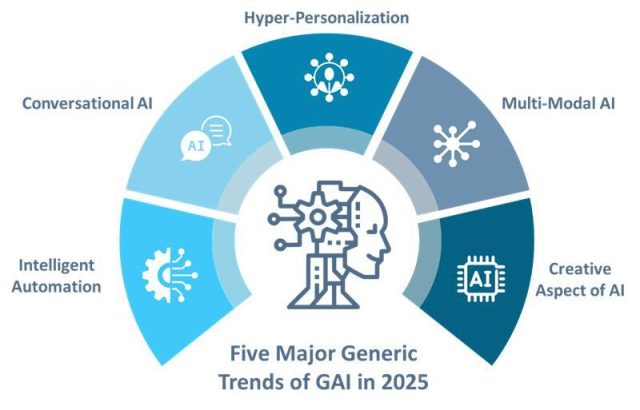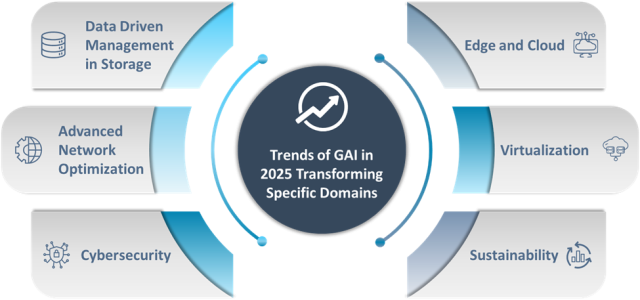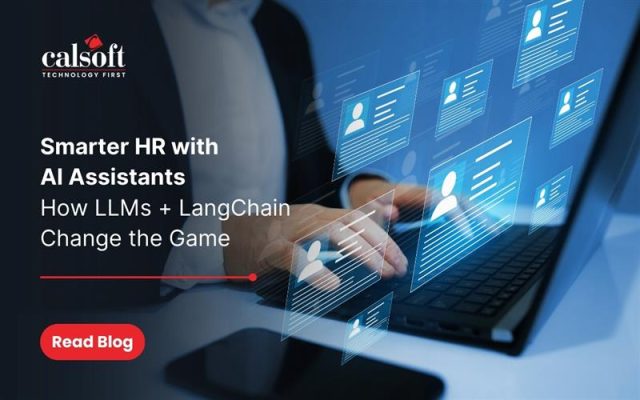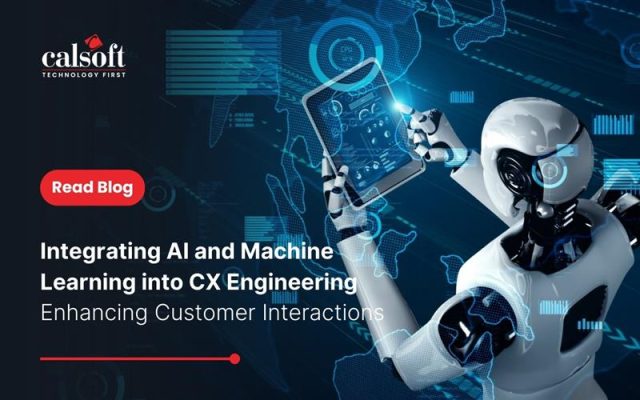From the Industrial Revolution to the digital transformation age, the modernization of industries always been powered by technology, especially the introduction of the Internet of Things (IoT). Technological advancement, particularly with the integration and use of Artificial Intelligence (AI) and its subset, Generative AI (Gen AI), has intensified and magnified this trend even further.
Although Generative AI was conceptualized decades ago, its recent advancements—especially with models like ChatGPT—have rapidly transformed its potential across industries. What started as a creative tool is now at the core of enterprise AI strategies, enabling intelligent decision-making and seamless automation.
As we step into 2025, the focus is shifting from experimentation to mainstream adoption of Gen AI, accelerating modernization efforts across sectors like storage, networking, security, and virtualization.
AI has made inroads and transformed many industries from healthcare to manufacturing. The AI crystal ball of 2025 shows where Gen AI’s impact will influence areas of all aspects of work and personal life.
Learn how Gen AI is impacting the supply chain management space Gen AI in Supply Chain Management
On what side of the Spectrum would your Enterprise like to be?
According to Statista, the AI market size is expected to show an annual growth rate (CAGR 2024-2030) of 28.46%, resulting in a market volume of US$826.70bn by 2030.
The Generative AI market worldwide is projected to grow by 46.47% (2024-2030), resulting in a market volume of US$356.10bn by 2030.
Top Generative AI Trends 2025

- Intelligent Process Automation: Generative AI is going beyond task automation with Agentic AI, which autonomously plans, executes, and optimizes processes in real time. Whether it’s preventing cyberattacks or handling infrastructure management, AI-powered automation is set to minimize human intervention while increasing efficiency.
- Conversational AI at Scale: From retail to banking, conversational AI tools have matured, with Generative AI enabling real-time decision-making via natural language understanding. Expect AI virtual assistants to handle complex user interactions more intuitively in 2025.
- Hyper-Personalization: Leveraging massive datasets, Generative AI can now deliver hyper-personalized content, services, and recommendations. This personalization—powered by real-time analytics—is becoming a competitive differentiator across B2C and B2B platforms. Read our latest blog to get more insights Gen AI Use Cases in Customer Service
- Multi-Modal AI for Better Context: Multi-modal AI integrates data from text, image, video, and speech to offer rich, contextual insights. It’s particularly useful in industries like healthcare, retail, and media, where cross-channel engagement matters. As per the Grandview Research, the global multimodal AI market size was estimated at USD 1.34 billion in 2023 and is projected to grow at a CAGR of 35.8% from 2024 to 2030.
- AI in Creative Content & Synthetic Data: AI-generated content is already influencing areas like marketing, design, and product prototyping. Gen AI tools can also produce synthetic datasets for improved AI model training, reducing data collection costs.
The following section focuses on how Gen AI will transform specific domains where Calsoft’s expertise supports our customers and clients. Also, read our blog on Enterprise AI Platforms. The practical application of Generative AI in enterprises resolves business challenges and constraints, enabling enhanced operations, increasing efficiency, productivity, and profitability
Domain-Specific Impact of Generative AI in 2025
With 27 years of expertise in software product engineering, Calsoft helps accelerate product development—from ideation to market analysis—through intelligent automation and optimization. Our integrated approach to engineering and digital transformation empowers ISVs, product companies, and digital enterprises to boost agility and reduce time to market.
With a strong focus on Generative AI services, Calsoft is ready to support your innovation journey.
Download the brochure to get more insights. Gen AI brochure

AI in Storage
As data generation scales, AI in storage is optimizing how we store, classify, and retrieve information:
- Predictive storage scaling & cost-efficient tiering
- Intelligent data deduplication and compression
- AI-powered metadata tagging for fast access
- Enhanced data management through real-time insights
Watch the webinar to explore how Generative AI plays a pivotal role in software development, especially in QA and software testing. Gen AI -Future of QA and Testing.
AI in Networking
Networking needs resilience, and Generative AI is stepping up:
- Simulating and optimizing network traffic flow
- Automating network configuration and issue resolution
- Predictive failure detection for proactive recovery
- Energy optimization and sustainable traffic routing
AI in Cybersecurity
With rising cyber threats, AI in cybersecurity offers proactive defense:
- Anomaly detection in real-time
- Synthetic attack simulation for testing
- Automated recovery & zero-trust policy enforcement
- Predictive hardware failure mitigation
AI in Cloud & Virtualization
Gen AI is redefining cloud computing and virtualization with smarter workload allocation, digital twins for testing, and synthetic data for training environments.
- Resource optimization via AI
- Voice/NLP-based interaction with virtualized systems
- Predictive workload distribution across edge-cloud setups
AI and Sustainability
With growing focus on green IT, AI and sustainability are becoming deeply interconnected:
- Optimizing power usage in data centers and networks
- Promoting longer hardware life and reducing e-waste
- Prioritizing the use of renewable energy through AI orchestration
Final Thoughts
By 2025, Generative AI will be embedded into the core of digital infrastructure. It will not only shape how we manage data, build systems, and deliver services, but also how enterprises achieve sustainability, resilience, and scalability. As organizations continue integrating Gen AI applications across domains, the key to success will lie in choosing the right partners, platforms, and priorities.
FAQ’s
Q1: What are the top generative AI trends in 2025?
A. Key trends include Agentic AI for automation, smarter conversational AI, hyper-personalization, multi-modal AI, and Gen AI’s growing role in storage, networking, and security.
Q2: How is Gen AI changing enterprise IT?
A. Gen AI helps manage data better, predict demand, optimize network traffic, and detect threats faster—all while improving efficiency and sustainability.
Q3: Why should businesses adopt Gen AI in 2025?
A. Gen AI boosts productivity, reduces costs, speeds up innovation, and delivers better user experiences—making it a smart move for future-ready businesses.






